Baby Scout Chews And Drools On Your 1,500 USD Designer Tie.. What Do You Do..?

baby scout chews and drools on your 1,500 USD designer tie.. what do you do..?
More Posts from Taro-rat and Others
Hello, I've been watching your content for a while. While I quit League a long time ago I still hold partial interest to Runeterra's lore, (such as it is) . In particular I really enjoy Bilgewater in general as well as Illaoi and Ezreal as individual characters and I've enjoyed your takes on said things. (Also fuck Demacia) And I wanted to ask you, after so much dissillussionment from Riot's content, in particular from the latest "cinematic" , how they have always prioritized e-sports and skins over actually giving the lore a proper direction and conclusion or how Legends of Runeterra is getting downsized and unlikely to last much longer, why do you still do League content? You are clearly very critical of a lot of the decisions the higher ups do that affect the output of artists and writers in charge of Runeterra's universe and character designs. And there has not been much sign of improvement since a lot of your points. It's like screaming into a brick wall at this point, so why not move on?
Why not spend your time on something that doesn't lead its fans along with empty promises, breaking them, promising to do better next time and then repeating the cycle all over again for years like an abusive relationship. Beyond doing it because it's what you're most well known for, why stick with content that you know will keep disappointing you?
I'm glad you are diversifying your content but I personally feel your passion for art, animation and writing analysis would be better spent away from League and into more games beyond that (in particularly really liked your take on "Despite everything, it's still you" from Undertale). The indie scene in particular is chock full of incredible and unique takes in terms of character design and narratives I'm sure you will enjoy. League is clearly not worth the time for people who are into the lore, art and setting of videogames anymore. I hope I wasn't too personal or intrusive with my question. Cheers.
So that's a very long question. I'll start with the short and cynical answer:
I am doing League of Legends content because that is what my audience wants, and that is what makes me most of my money.
My channel is a League of Legends channel primarily, the algorithm likes it and pushes it that way, and League of Legends is an absolutely enormous intellectual property with an absolutely enormous player base, which means there's a big audience for my content about the game. A large audience means more engagement, means more ad revenue, more sponsorship opportunities, more subscribers, and so on and so on.
That's the cynical part of the answer. I don't want to sidestep it with some guff about "being passionate about the subject," because the truth of my job is that it is a job. I'm not sailing freely on the oceans of creative impulse pursuing my bliss, I'm trying to pay my rent and my pets veterinarian bills and pay down loans and have enough left over to help my friends when they need it.
I approach this job much the same way I approached being a freelance illustrator - having passion for the subject is a nice bonus, but you don't always need it to do good and valuable work.
And with the cynicism out of the way... I also just genuinely love the fucking League of Legends universe. With all its many, many stupid flaws and its garbage corpo owner and its years of systematic neglect and the constant disappointment, god help me, I still love this stupid shit. And when management gets out of the way and lets the good writers at Riot be good at their goddamn jobs, amazing things can happen.
The Ashe: Warmother comic is still such a beautiful short narrative work, with such visual verve and empathy for the characters it's depicting.
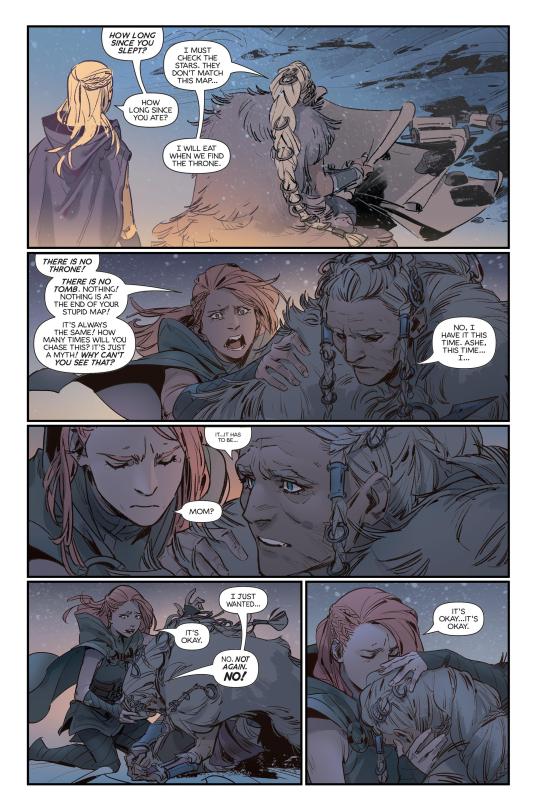

It zeroes in so acutely on the idea that Ashe and Sejuani are shaped by their difficult relationships with their mothers, and that THAT is ultimately the difference that drives them apart when they should by rights have had the chance to be sisters. When they become warmothers of their own tribes, it is the memory of their mothers that drive them, and just as the Freljord is divided by generations of strife engineered by Lissandra, the matriarch of the whole region, that generational trauma resonates into Ashe and Sejuani and sets them against each other.
Or Ekko's short story, where he has been accepted to the fancy Piltover academy that's supposed to be his golden ticket out of poverty, his chance to escape Zaun, everything his parents have worked their whole lives to give him, and...




Like, FUCK, you can't just invent these silly cartoon muppets to throw at each each other in your dumb MOBA beat 'em up and then give them INTERIORITY like this??? Apply their silly cartoon powers in way that explores their emotional difficulties and works thematically with their internal philosophies?
god dammit I love this stupid game's universe, I cannot be saved, leave me and go before it infects you too!


honey wake up sexy hoovy postcard just dropped

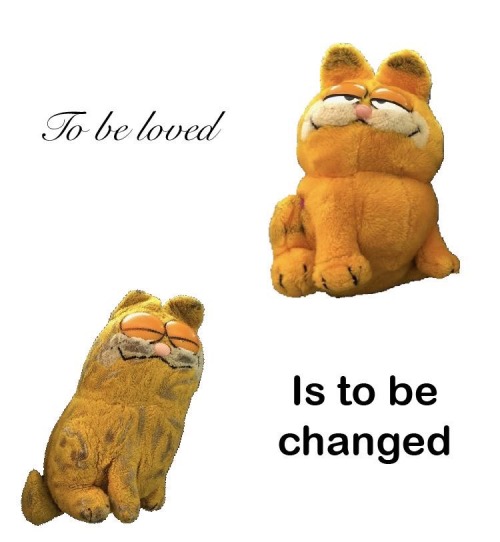
Steampunk Pina
So glad I actually looked through a physical copy and saw this steampunk Pina who now lives rent free in my head. ❤💜💙🧡💛💚

cw for everything
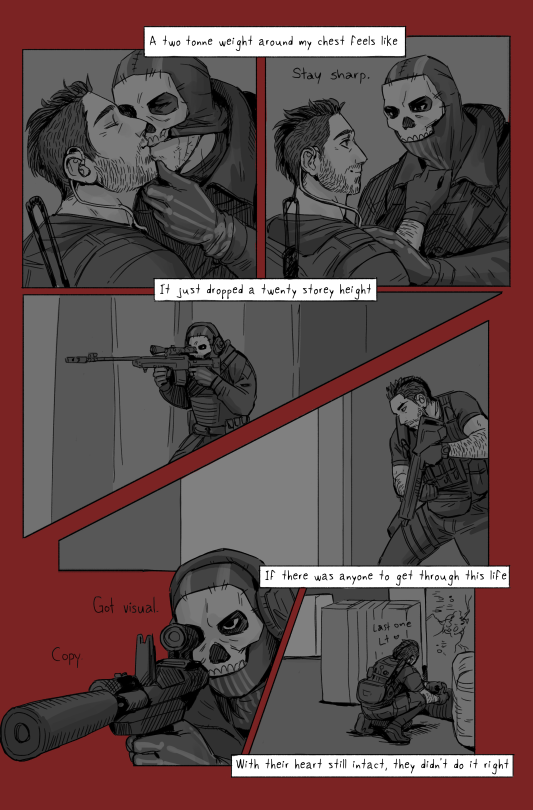


All Things End
Sometimes you see a picture, and you know immediately the song that would bring it to life.
https://twitter.com/memento1113?s=20&t=NOytWLlRmIZMRLlamP3sig
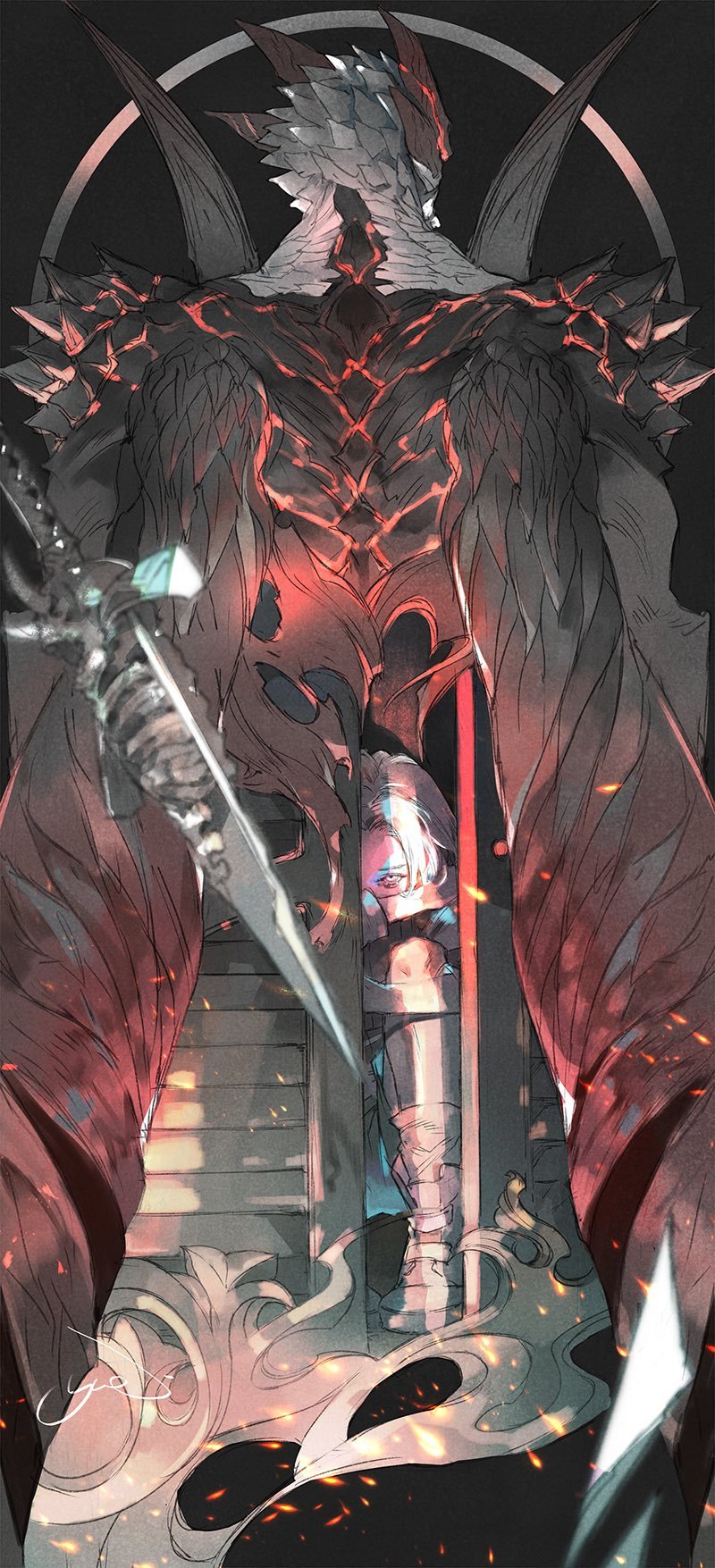
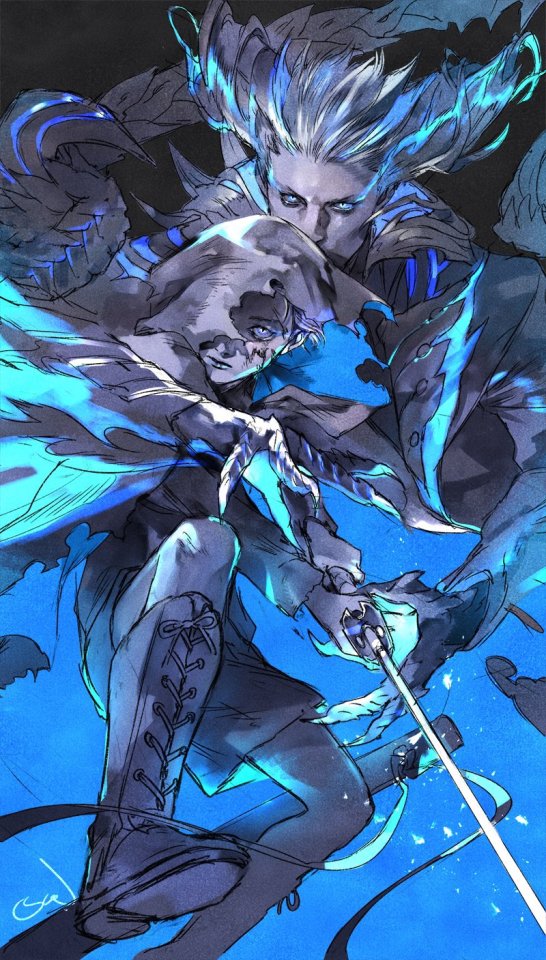







Kaeya studies,,,,, plus childe n kaeya with flowers ro celebrate my friend's childe chibigurumi and my kaeya chibigurumi
someone very kind and wonderful in my comments for EE asked to read the full version of the chapter 3 end notes, which were too long for ao3 character count, so here it is 💕
link to chapter 3
end notes:
The structure of Sukuna’s shrine is inspired by his domain, which takes the form of a Buddhist temple. However, here it also includes many Shinto architecture elements, such as the sanctuary hall and torii, because during the Heian era (and until the Meiji Restoration in 1868), Buddhism and Shinto were syncretized. When Buddhism appeared in Japan from China and Korea in the mid-6th century, it integrated with the indigenous Shinto, so traditions, religious practices, and shrines and temples often combined elements of both. In JJK, it is stated that Tengen was helping spread Buddhism during the Nara period (710-784 AD). As Sukuna has been alive for longer, his shrine contains both Shinto and Buddhist elements.
The torii is the entrance arch to a shrine. Shinto shrines contain a honden, or main hall, is the building that houses the enshrined deity. The haiden, which Sukuna’s shrine lacks in this work, is the main worship/oratory hall, where visitors can pray. They are sometimes connected, with the haiden in front of the honden. Burning incense is a purifying practice that was introduced with Buddhism. Offerings of food are present in both religions.
The main lighting sources in the Heian period were charcoal braziers, candles, and paper lanterns. Chouchin are hanging lanterns made by covering a bamboo frame with silk or paper. Although the earliest record of a chouchin is in 1085, paper lantern technology has been common in China since the Tang Dynasty (690–705 AD).
As mentioned in Chapter 1, the Fujiwara clan was an incredibly powerful political family during the Heian era. In JJK, they are shown to have employed sorcerers like Uro Takako.
Sukuna’s shrine is in the province of Hida, or the modern-day Gifu prefecture, within the Japanese Alps. Hida’s capital was the modern-day city of Takayama, which also contained its provincial temple, or kokubun-ji, established in 757 after a smallpox epidemic. Hida’s carpentry was so well-known that during the Nara period, an official court position for Hida craftsmen was created. The province provided timber and metals from its forests to other regions.
Hida province had a relatively small population and was categorized as an inferior to mid-level country in terms of importance during the early Heian era. However, during the later Edo period, its importance rose because the Gifu region contained the Nakasendō, one of the five main routes of the time and one of two that connected Kyoto and the new capital Edo (modern-day Tokyo).
Aoi Matsuri is one of the three main annual festivals held in Kyoto, Japan. It is the festival of the two Kamo shrines in the north of the city, Shimogamo Shrine and Kamigamo Shrine. Both these shrines have been established since the 6th-7th century and are both historical “National Treasures” of Japan today. They are named both for the Kamo river and the Kamo clan, early inhabitants of the area who helped establish it as sacred. The festival originated during the reign of Emperor Kinmei (539-571 AD) according to the Nihon Shoki. When the capital was moved to Heian-Kyo in the 9th century, Aoi Matsuri became an annual imperial event. As such, at the height of its grandeur, it’s plausible that celebrations would reach the Hida province. In JJK (in the official fanbook), the Kamo clan rose to prominence after inheriting the lineage of a man named Onmyouji, a powerful sorcerer during the Heian era, though there is nothing to suggest the clan itself did not exist prior to this.
The Nihon Shoki, completed in 720 AD, is the second-oldest book of Japanese chronicles and contains both historical and folk/mythological records. In the Nihon Shoki, Ryoumen Sukuna is described as an inhumanly strong man with two faces and eight limbs. During the reign of Emperor Nintoku (c. 313-399 AD), he terrorized and plundered towns until he was defeated by a military leader from the Imperial Court named Takefurukuma no Mikoto in 377 AD.
However, folklore in Hida regards Sukuna as a protector. He was the patron deity of the Senko-ji, Zenkyu-ji, and Nichiryubu-ji temples for feats such as defeating a dragon and praying for a good harvest, though none of these are recorded in the Nihon Shoki, outside of folktales. One of the stories expands on Sukuna’s last fight; he was ambushed first, then after a long battle, retreated to Mount Norikura, east of Takayama. He fought again there but eventually succumbed. Takefurukuma, impressed by his valor, offered him mercy if he surrendered, but Sukuna refused and was killed. In this work, Sukuna lived, and the man possessing Takefurukuma is implied to be Kenjaku.
In JJK, Kenjaku contracted Dhruv Lakdawalla, a sorcerer originally from the late Yayoi period (2nd century AD). Dhruv already lived a second life in some undetermined era before incarnating into the Culling Game, so Kenjaku might have contracted him at that point and not been alive during the Yayoi period. However, he is likely older than Sukuna due to his knowledge of Tengen, and his age here is increased like Sukuna’s.
In 675 AD, Emperor Tenmu prohibited the consumption of cattle, dogs, horses, monkeys, and chicken during the farming months (4th-9th months of the year). Eventually, due to the influence of Buddhism and the scarcity of such domesticated animals, the ban expanded to be year-round. Deer, boar, rabbits, and wild fowl remained part of the Japanese diet, though meat was never an important staple in the first place. This ban on meat lasted until close to the Meiji era in the 1800s.
Narezushi is fermented fish, likely stemming from the paddy fields of ancient southern China. Sources conflict on when exactly it migrated to Japan, but it was pre-Heian; the earliest extant written reference to sushi is the Yōrō Code, a compiled code of governing rules, in 718 AD. It was during the Muromachi period (1336-1573 AD) that namanare, which is partially-raw fish consumed fresh with rice, became popular.
As mentioned in Chapter 1, Sugawara no Michizane was a scholar and politician during the Heian era who was banished by his political enemies in the Fujiwara clan. After his death in exile, disaster struck the Imperial family and palace, leading them to believe he had returned in wrath. He was known as one of Japan’s (and JJK’s) most infamous vengeful spirits. Kitano Tenmangū, a shrine in Heian-Kyo, was built in 947 to appease his angry spirit. He was later deified as Tenjin, the Shinto god of learning.
In JJK, Tengen is the strongest barrier user in Japan. His barriers are extremely skilled at hiding the presence of the school and cursed storehouse, as well as himself. Reggie calls him a shut-in, and Yuki says he does not interfere with the world. Humans usually cannot see curses due to their lack of cursed energy, so humans in the Heian era perhaps couldn’t either. However, it’s likely that more sorcery-capable humans existed in the golden age than in the present day.
Usually, sorcerers can only turn into cursed spirits through death, but Tengen evolved into a curse-like being by the accumulation of time (and likely cursed energy), enough so that he could be controlled by curse manipulation. This evolution is the basis of Sukuna’s body evolving into cursed flesh in this work. In JJK, Sukuna’s fingers are written as having grown in power until the seals on them became ineffective. The paradox referenced in regard to Gojo’s technique is the Achilles and the tortoise paradox of motion.

I miss him. Wake up soon, Kacchan
-
 mango-mage liked this · 1 month ago
mango-mage liked this · 1 month ago -
 rocknconcerrt liked this · 1 month ago
rocknconcerrt liked this · 1 month ago -
 puresutafed liked this · 1 month ago
puresutafed liked this · 1 month ago -
 ask-crow-aus liked this · 1 month ago
ask-crow-aus liked this · 1 month ago -
 oliv3-green liked this · 1 month ago
oliv3-green liked this · 1 month ago -
 mimikyutie reblogged this · 1 month ago
mimikyutie reblogged this · 1 month ago -
 mimikyutie liked this · 1 month ago
mimikyutie liked this · 1 month ago -
 maksbrainrotdump reblogged this · 1 month ago
maksbrainrotdump reblogged this · 1 month ago -
 enceboyado liked this · 1 month ago
enceboyado liked this · 1 month ago -
 rie7rhhr liked this · 1 month ago
rie7rhhr liked this · 1 month ago -
 coatxxl liked this · 1 month ago
coatxxl liked this · 1 month ago -
 reubarb liked this · 1 month ago
reubarb liked this · 1 month ago -
 paws-oncardboard liked this · 1 month ago
paws-oncardboard liked this · 1 month ago -
 wemightbeokayafterall reblogged this · 1 month ago
wemightbeokayafterall reblogged this · 1 month ago -
 ilities liked this · 1 month ago
ilities liked this · 1 month ago -
 starlightnyx liked this · 1 month ago
starlightnyx liked this · 1 month ago -
 nicholaskiras liked this · 1 month ago
nicholaskiras liked this · 1 month ago -
 pipidr liked this · 1 month ago
pipidr liked this · 1 month ago -
 kkoscheiii liked this · 1 month ago
kkoscheiii liked this · 1 month ago -
 strawberiitea reblogged this · 1 month ago
strawberiitea reblogged this · 1 month ago -
 mrnaku liked this · 1 month ago
mrnaku liked this · 1 month ago -
 alexsissosok liked this · 1 month ago
alexsissosok liked this · 1 month ago -
 shadowtalesfromyoutube liked this · 1 month ago
shadowtalesfromyoutube liked this · 1 month ago -
 veeem07 liked this · 1 month ago
veeem07 liked this · 1 month ago -
 youngcreativenerdgoddess liked this · 1 month ago
youngcreativenerdgoddess liked this · 1 month ago -
 classica-1750 reblogged this · 1 month ago
classica-1750 reblogged this · 1 month ago -
 classica-1750 liked this · 1 month ago
classica-1750 liked this · 1 month ago -
 justsomeonewholovesgayguys liked this · 1 month ago
justsomeonewholovesgayguys liked this · 1 month ago -
 theincubuscorp liked this · 1 month ago
theincubuscorp liked this · 1 month ago -
 fish-stick-blues liked this · 1 month ago
fish-stick-blues liked this · 1 month ago -
 galactic-vampire liked this · 1 month ago
galactic-vampire liked this · 1 month ago -
 time-turning liked this · 1 month ago
time-turning liked this · 1 month ago -
 sirkitti liked this · 1 month ago
sirkitti liked this · 1 month ago -
 mynorse-verse liked this · 1 month ago
mynorse-verse liked this · 1 month ago -
 blue-snake-48 liked this · 1 month ago
blue-snake-48 liked this · 1 month ago -
 yulian-fleischmann liked this · 1 month ago
yulian-fleischmann liked this · 1 month ago -
 seiforst liked this · 1 month ago
seiforst liked this · 1 month ago -
 ssolvix reblogged this · 1 month ago
ssolvix reblogged this · 1 month ago -
 confusedcom liked this · 1 month ago
confusedcom liked this · 1 month ago -
 gofer68 liked this · 1 month ago
gofer68 liked this · 1 month ago -
 alt-alert-art liked this · 1 month ago
alt-alert-art liked this · 1 month ago -
 5uperduper liked this · 1 month ago
5uperduper liked this · 1 month ago -
 dahniheartempest liked this · 1 month ago
dahniheartempest liked this · 1 month ago -
 brainwwwaves liked this · 1 month ago
brainwwwaves liked this · 1 month ago -
 take-it-all-out-w-me liked this · 1 month ago
take-it-all-out-w-me liked this · 1 month ago -
 mould-eater liked this · 2 months ago
mould-eater liked this · 2 months ago -
 pixie-mask reblogged this · 2 months ago
pixie-mask reblogged this · 2 months ago -
 vyn1a liked this · 2 months ago
vyn1a liked this · 2 months ago

19 | he/they | occasionally draws | current obession: clark kent
488 posts